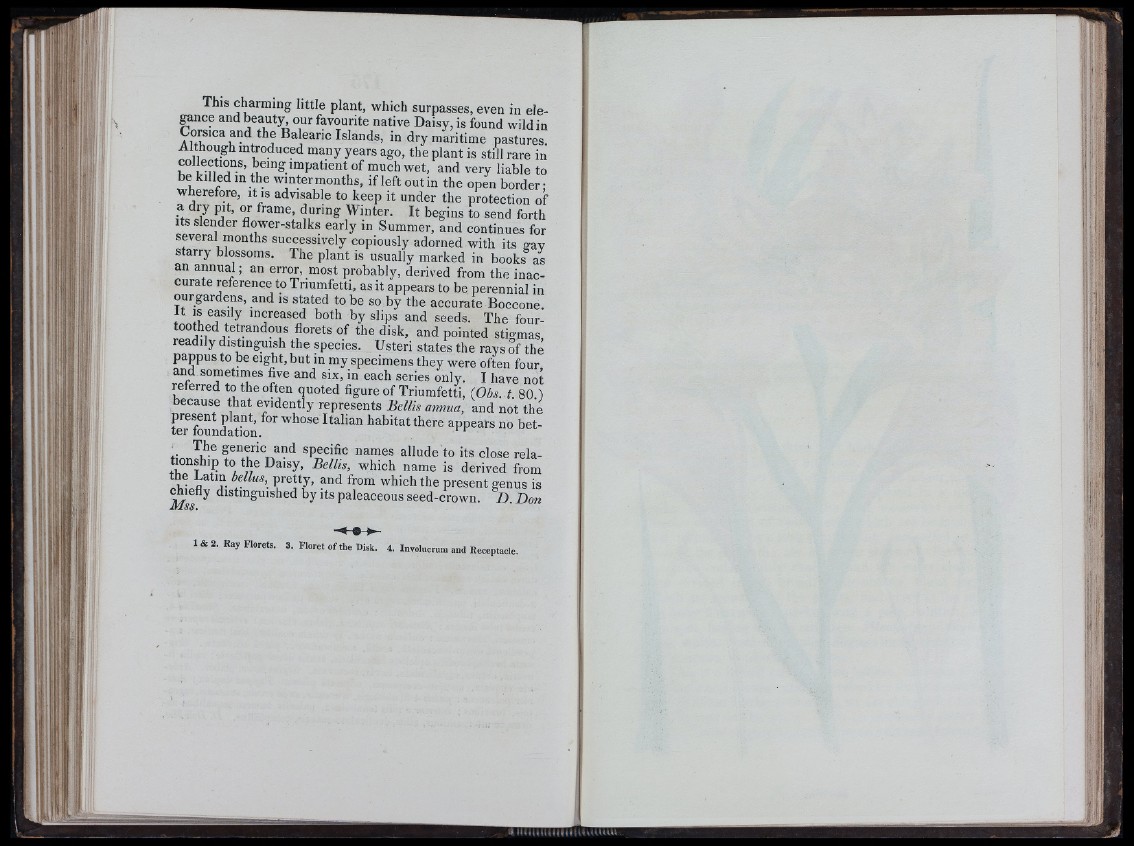
This charming little plant, which surpasses, even in elegance
and beauty our favourite native Daisy, is found wild in
Corsicaand the Balearic Islands, in dry maritime pastures.
Although introduced many years ago, the plant is still rare in
collections, being impatient of much wet, and very liable to
be^killed in the wintermonths, if left out in the open border-
wherefore, it is advisable to keep it under the protection of
a dry pit, or frame, during Winter. It begins to send forth
Its slender flower-stalks early in Summer, and continues for
several months successively copiously adorned with its gav
starry blossoms. The plant is usually marked in books as
an annual; an error, most probably, derived from the inaccurate
reference to Triumfetti. as it appears to be perennial in
ourgardens, and is stated to be so by the accurate Boccone.
It IS easily increased both by slips and seeds. The four-
toothed tetrandous florets of the disk, and pointed stio-mas
leadily distinguish the species. Usteri states the rays of thé
pappus to be eight, but in my specimens they were often four
and sometimes five and six, in each series only. I have not
referred to the often quoted figure of Triumfetti, (Obs. t. 80.)
because that evidently represents Bellis annua, and not the
present plant, for whose Italian habitat there appears no better
foundation.
The generic and specific names allude to its close relationship
to the Daisy, Bellis, which name is derived from
the Latin bellus, pretty, and from which the present genus is
“‘^Anguished by its paleaceous seed-crown. D. Don
1 & 2 . Ray Florets. 3. F lo ret o f the Disk. 4 . Invoh.crnm and R e cepta cle.
! :! I’Ll
II 'M
m